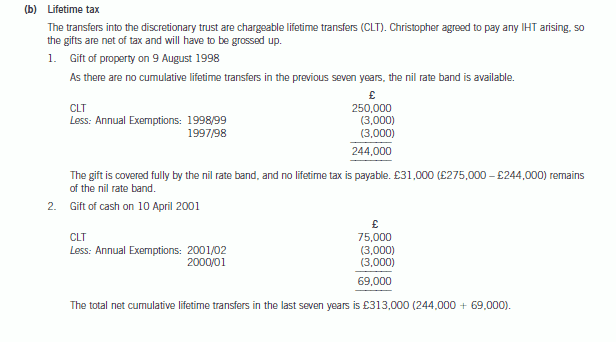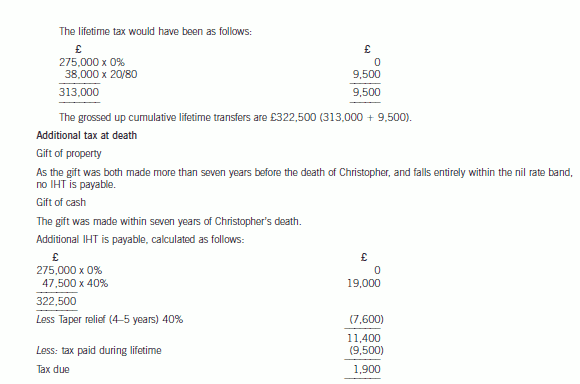ACCA考试P4科目模拟试题(2019-01-04)
发布时间:2019-01-04
特许公认会计师公会(The
Association of Chartered Certified Accountants)简称ACCA,成立于1904年,是目前世界上领先的专业会计师团体,也是国际学员最多、学员规模发展最快的专业会计师组织。今天我们要看的就是ACCA考试中P4科目的模拟试题,希望大家能从做题过程中提升自己。
Question:ST Inc makes a bid to acquire all the share capital of WV Inc,
paying for the acquisition by means of a share exchange. The shares of ST Inc
are currently trading on a P/E of 12.5 and the shares of WV Inc are trading on
a P/E ratio of 15. No savings or increase in combined sales are expected as a
result of the takeover.
Given
no change in the annual profits after tax of either company, what will happen
to the earnings per share of the combined ST group after the takeover?
A.
EPS will remain the same.
B.
EPS will go down.
C.
It is impossible to assess, without figures for earnings and numbers of shares.
D.
EPS will go up.
The
correct answer is: EPS will go down.
When
the bid consideration is all in shares and one company buys another on a higher
P/E ratio, the EPS will fall after the takeover unless total profits can be
increased after the takeover, perhaps through economies of scale or higher
combined total sales. In this question, there are no such profit increases.
备考之路漫长艰辛,需要大家持之以恒,每天要进行复习,切忌三天打鱼两天晒网,51题库考试学习网会一直在您的身边,支持您,陪伴您。祝愿大家早日功成名就!!!
下面小编为大家准备了 ACCA考试 的相关考题,供大家学习参考。
(b) Calculate the inheritance tax (IHT) liability arising as a result of Christopher’s death. (11 marks)



(ii) equipment used in the manufacture of Bachas Blue; and (4 marks)
(ii) Equipment used in the manufacture of Bachas Blue
Tutorial note: In the context of GVF, the principal issue to be addressed is whether or not the impairment loss previously
recognised should be reversed (by considering the determination of value in use). Marks will also be awarded for
consideration of depreciation, additions etc made specific to this equipment.
■ Agree cost less accumulated depreciation and impairment losses at the beginning of the year to prior year working
papers (and/or last year’s published financial statements).
■ Recalculate the current year depreciation charge based on the carrying amount (as reduced by the impairment
loss).
■ Calculate the carrying amount of the equipment as at 30 September 2005 without deduction of the impairment
loss.
Tutorial note: The equipment cannot be written back up to above this amount (IAS 36 ‘Impairment of Assets’).
■ Agree management’s schedule of future cash flows estimated to be attributable to the equipment for a period of up
to five years (unless a longer period can be justified) to approved budgets and forecasts.
■ Recalculate:
– on a sample basis, the make up of the cash flows included in the forecast;
– GVF’s weighted average cost of capital.
■ Review production records and sales orders for the year, as compared with the prior period, to confirm a ‘steady
increase’.
■ Compare sales volume at 30 September 2005 with the pre-‘scare’ level to assess how much of the previously
recognised impairment loss it would be prudent to write back (if any).
■ Scrutinize sales orders in the post balance sheet event period. Sales of such produce can be very volatile and
another ‘incident’ could have sales plummeting again – in which case the impairment loss should not be reversed.
(c) In October 2004, Volcan commenced the development of a site in a valley of ‘outstanding natural beauty’ on
which to build a retail ‘megastore’ and warehouse in late 2005. Local government planning permission for the
development, which was received in April 2005, requires that three 100-year-old trees within the valley be
preserved and the surrounding valley be restored in 2006. Additions to property, plant and equipment during
the year include $4·4 million for the estimated cost of site restoration. This estimate includes a provision of
$0·4 million for the relocation of the 100-year-old trees.
In March 2005 the trees were chopped down to make way for a car park. A fine of $20,000 per tree was paid
to the local government in May 2005. (7 marks)
Required:
For each of the above issues:
(i) comment on the matters that you should consider; and
(ii) state the audit evidence that you should expect to find,
in undertaking your review of the audit working papers and financial statements of Volcan for the year ended
31 March 2005.
NOTE: The mark allocation is shown against each of the three issues.
(c) Site restoration
(i) Matters
■ The provision for site restoration represents nearly 2·5% of total assets and is therefore material if it is not
warranted.
■ The estimated cost of restoring the site is a cost directly attributable to the initial measurement of the tangible fixed
asset to the extent that it is recognised as a provision under IAS 37 ‘Provisions, Contingent Liabilities and
Contingent Assets’ (IAS 16 ‘Property, Plant and Equipment’).
■ A provision should not be recognised for site restoration unless it meets the definition of a liability, i.e:
– a present obligation;
– arising from past events;
– the settlement of which is expected to result in an outflow of resources embodying economic benefits.
■ The provision is overstated by nearly $0·34m since Volcan is not obliged to relocate the trees and de facto has
only an obligation of $60,000 as at 31 March 2005 (being the penalty for having felled them). When considered
in isolation, this overstatement is immaterial (representing only 0·2% of total assets and 3·6% of PBT).
■ It seems that even if there are local government regulations calling for site restoration there is no obligation unless
the penalties for non-compliance are prohibitive (unlike the fines for the trees).
■ It is unlikely that commencement of site development has given rise to a constructive obligation, since past actions
(disregarding the preservation of the trees) must dispel any expectation that Volcan will honour any pledge to
restore the valley.
■ Whether commencing development of the site, and destroying the trees, conflicts with any statement of socioenvironmental
responsibility in the annual report.
(ii) Audit evidence
■ A copy of the planning application and permission granted setting out the penalties for non-compliance.
■ Payment of $60,000 to local government in May 2005 agreed to the bank statement.
■ The present value calculation of the future cash expenditure making up the $4·0m provision.
Tutorial note: Evidence supporting the calculation of $0·4m is irrelevant as there is no liability to be provided for.
■ Agreement that the pre-tax discount rate used reflects current market assessments of the time value of money (as
for (a)).
■ Asset inspection at the site as at 31 March 2005.
■ Any contracts entered into which might confirm or dispute management’s intentions to restore the site. For
example, whether plant hire (bulldozers, etc) covers only the period over which the warehouse will be constructed
– or whether it extends to the period in which the valley would be ‘made good’.
(b) When a director retires, amounts become payable to the director as a form. of retirement benefit as an annuity.
These amounts are not based on salaries paid to the director under an employment contract. Sirus has
contractual or constructive obligations to make payments to former directors as at 30 April 2008 as follows:
(i) certain former directors are paid a fixed annual amount for a fixed term beginning on the first anniversary of
the director’s retirement. If the director dies, an amount representing the present value of the future payment
is paid to the director’s estate.
(ii) in the case of other former directors, they are paid a fixed annual amount which ceases on death.
The rights to the annuities are determined by the length of service of the former directors and are set out in the
former directors’ service contracts. (6 marks)
Required:
Draft a report to the directors of Sirus which discusses the principles and nature of the accounting treatment of
the above elements under International Financial Reporting Standards in the financial statements for the year
ended 30 April 2008.
(b) Directors’ retirement benefits
The directors’ retirement benefits are unfunded plans which may fall under IAS19 ‘Employee Benefits’.
Sirus should review its contractual or constructive obligation to make retirement benefit payments to its former directors at the
time when they leave the firm. The payments may create a financial liability under IAS32, or may give rise to a liability of
uncertain timing and amount which may fall within the scope of IAS37 ‘Provisions, contingent liabilities and contingent
assets’. Certain former directors are paid a fixed annuity for a fixed term which is payable annually, and on death, the present
value of future payments are paid to the director’s estate. An annuity meets the definition of a financial liability under IAS32,
if there is a contractual obligation to deliver cash or a financial asset. The latter form. of annuity falls within the scope of
IAS32/39. The present value of the annuity payments should be determined. The liability is recognised because the directors
have a contractual right to the annuity and the firm has no discretion in terms of withholding the payment. As the rights to
the annuities are earned over the period of the service of the directors, then the costs should have been recognised also over
the service period.
Where an annuity has a life contingent element and, therefore, embodies a mortality risk, it falls outside the scope of IAS39
because the annuity will meet the definition of an insurance contract which is scoped out of IAS39, along with employers’
rights and obligations under IAS19. Such annuities will, therefore, fall within the scope of IAS37 if a constructive obligation
exists. Sirus should assess the probability of the future cash outflow of the present obligation. Because there are a number of
similar obligations, IAS37 requires that the class of obligations as a whole should be considered (similar to a warranty
provision). A provision should be made for the best estimate of the costs of the annuity and this would include any liability
for post retirement payments to directors earned to date. The liability should be built up over the service period rather than
just when the director leaves. In practice the liability will be calculated on an actuarial basis consistent with the principles in
IAS19. The liability should be recalculated on an annual basis, as for any provision, to take account of changes in directors
and other factors. The liability will be discounted where the effect is material.
声明:本文内容由互联网用户自发贡献自行上传,本网站不拥有所有权,未作人工编辑处理,也不承担相关法律责任。如果您发现有涉嫌版权的内容,欢迎发送邮件至:contact@51tk.com 进行举报,并提供相关证据,工作人员会在5个工作日内联系你,一经查实,本站将立刻删除涉嫌侵权内容。
- 2019-01-04
- 2019-01-04
- 2019-01-04
- 2019-01-04
- 2019-01-04
- 2019-01-04